It was once America’s fastest-growing city. Now the boom times are back in this Placer suburb
The Gladding, McBean plant still churns out clay pottery, terracotta arches and roof tiles on the northern edge of downtown Lincoln, just as it has for more than 140 years. Every Fourth of July, hundreds of residents pack McBean Park starting with an early-morning pancake breakfast and ending with – what else – a baseball game and fireworks. And when a new resident moves to town, the city manager himself sometimes helps them set up a new utility account at City Hall.
A former sleepy railway town, Lincoln was the fastest-growing city in America between 2000 and 2010 as the Sacramento suburbs rapidly expanded into the grasslands of south Placer County. Yet through the historic growth, the city, about 30 miles from Sacramento, maintained its Mayberry feel, a selling point that was a big draw for families in search of safe streets, lots of parks and high performing schools.
After a post-recession slowdown, the boom times are back.
Lincoln’s housing stock has grown an astonishing 9.5% since the pandemic began, among the highest rates in California, according to a Sacramento Bee analysis of housing data kept by the state’s Department of Finance. Hundreds of other homes have been approved or are under construction, and the city is looking to annex large swaths of land in unincorporated Placer County to add even more housing and commercial space.
Lincoln’s population has grown from about 11,000 in 2000 to more than 52,000 today. Over the past three years, the city’s growth rate was the fifth highest among cities in California with at least 40,000 residents, according to The Bee’s analysis. Real estate agents and city officials say most of the new residents appear to be arriving from the Bay Area and other regions outside of Sacramento, many in search of homes that are affordable by coastal standards in a city with abundant open space.
“There are a lot of people who would trade living in a big cement city for Mayberry anytime,” said David Uhte, president of the Placer County Association of Realtors.
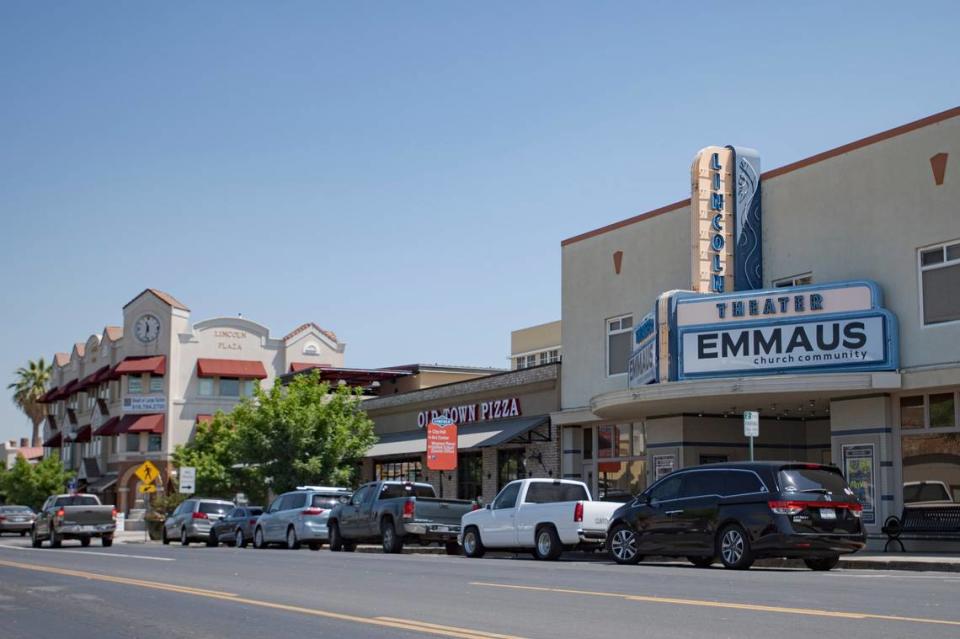
While the growth is a sign that the COVID-era appeal of Sacramento’s suburbs remains strong, the latest period of expansion could present Lincoln with renewed challenges.
Some long-time residents are concerned that the boom-and-bust environment that struck the city and many others during the housing market crash of the 2000s might return. Nearly a dozen Lincoln police officers and firefighters were laid off in 2009, as the city’s primary source of income – property tax dollars collected from new homes – cratered.
“It seems like we’re always teetering on either insolvency or progress,” said Chuck Schmidt, a long-time Lincoln resident and critic of the city’s past financial decisions. “And I worry history will repeat itself.”
City officials, led by a city manager who arrived in 2022 in the wake of a financial mismanagement scandal at City Hall, contend they have been more conservative in their budget outlook this time around, planning out the city’s spending plans two years at a time.
In addition to lingering concerns about the city’s finances, there’s also the question of whether Lincoln can maintain a connection with its roots. Can it still be the place where the mayor’s family has been in town for nearly 100 years and has a major street named after them? Where retirees ride around their neighborhoods in golf carts and high school rodeos attract large crowds?
Or will sprawl turn it into a mass-produced suburb void of character?
“It’s a question that Lincoln will continue to ask itself in perpetuity,” said City Manager Sean Scully. “How do you maintain the culture of your community in the face of thousands of new residents? The answer needs to come from the community itself.”
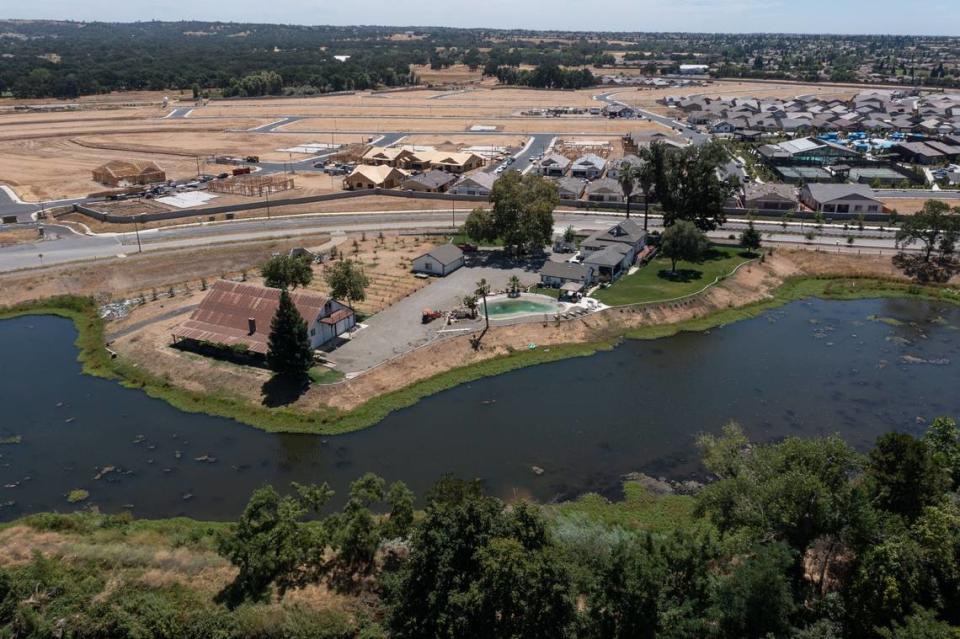
‘We never looked back’
Olivia and Tanner Keller are among that new wave of residents.
When the Kellers, both 24, began looking for a home after Olivia finished nursing school in Utah, they started their search focused on Folsom, Roseville and Rocklin. But at the urging of their real estate agent, Laura Eklund, the young newlyweds began to consider Lincoln.
“She told us it was within our budget and had everything we wanted,” Tanner said. “And we never looked back.”
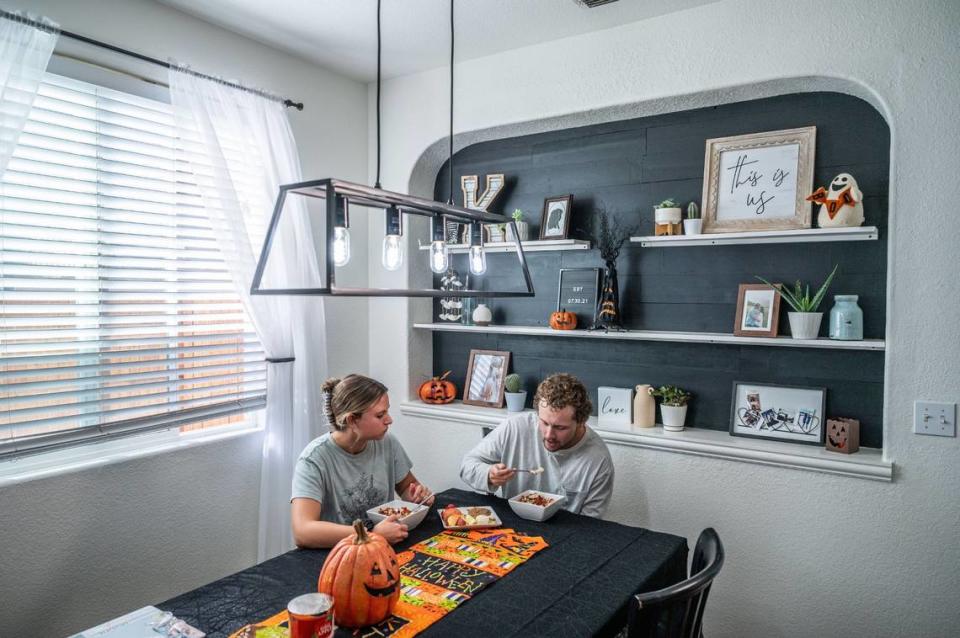
They bought a home in Lincoln in July and found a growing suburb where the homes were far more affordable than other bedroom communities. In some instances, the sale price for a typical three-bedroom home in Lincoln is tens of thousands of dollars less than nearby cities.
“What we bought this house for here,” Olivia said, “could have gotten us a townhome in Rocklin or a fixer-upper in Folsom.”
They also found a city with abundant parks and trails, the result of a city policy that developers of new housing projects must set aside 40% of land to open space, far more than many other cities require. They liked that the city has modern shopping options such as a Sprouts natural food grocery store, as well as long-standing restaurants downtown, striking an often elusive balance sought by city leaders around the region.
Now the Kellers are building a life in Lincoln. The walls of their three-bedroom home are decorated with photos from their wedding reception and other adventures. Many of their neighbors’ homes have basketball hoops out front and Halloween decorations hanging in the trees, signs that the occupants are families with children.

Their neighborhood was built during Lincoln’s first boom about 20 years ago. Now other corners of the city are expanding again today.
On a sunny late summer day, the soundtrack of south Placer County filled the air near Ferrari Ranch Road, where a community of hundreds of homes is springing from the ground. Nail guns and hammers pounded nails into new roofs. An excavator moved dirt where new utility lines were being put into place.
More than a half dozen new neighborhoods — often referred to in Lincoln as “villages” — are under construction, with a combined 2,000 homes planned in those communities, according to a city map of development activity. That represents a remarkable pace of new housing growth for any city, let alone one Lincoln’s size.
In the past three years alone, 1,841 units of housing were built in Lincoln, according to state data. By comparison, Elk Grove — with nearly four times Lincoln’s population — built about 100 more housing units during that time.
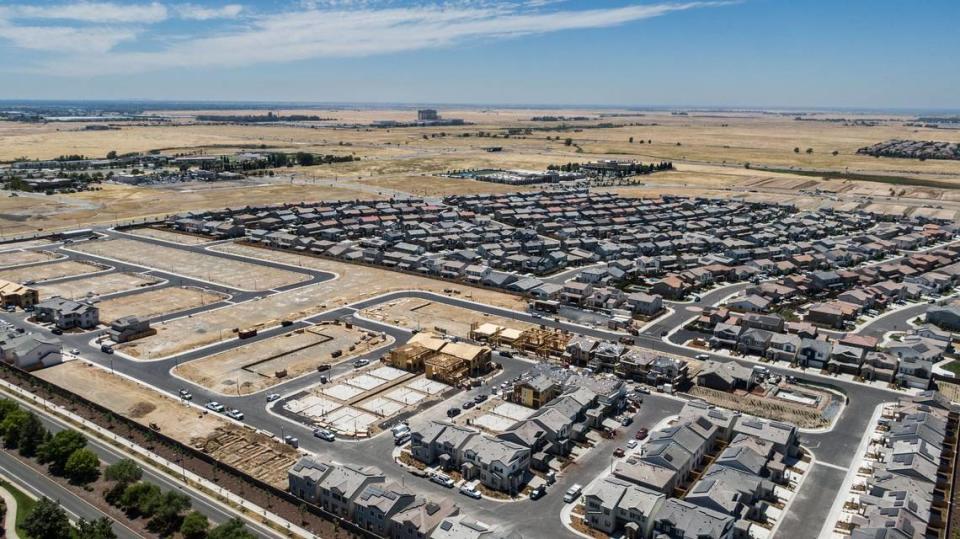
Still, less than 1% of the new homes built in Lincoln since 2020 were attached (apartments, condos or townhomes), a paltry number that likely means little to no affordable housing opened in the city. Regional planners have tried to prioritize denser housing types that cost less than homes on large single-family lots and take up less open space.
For their part, city officials have made progress in encouraging more compact housing styles. Many of the homes being built now are on small lots and are in areas zoned for high density housing, according to the city’s development map.
“The majority of folks who were coming in (during the last growth period) were looking for that classic quarter-acre lot, single-family home type of environment,” Lincoln Mayor Paul Joiner said. “But that’s shifting. (City officials) can pick and choose a little more.”

A 2020 regional housing assessment by the Sacramento Area Council of Governments determined that Lincoln needs to plan for nearly 2,400 units of housing attainable to very low- and low-income earners this decade to meet demand.
The city has some of what Joiner described as “attainable housing” developments in the works — housing that is far denser and more affordable than the large homes that defined the first building boom.
“The town was built as a working class community and the only reason that was possible was because it was affordable to live here,” Scully, the city manager, said. “To the extent that is not the case any longer, then some of our identity is lost.”
Remembering the recession
Much of Lincoln’s identity was damaged when the Great Recession hit. New residents who had purchased homes in the early 2000s saw their equity evaporate almost overnight. Long-time residents still recall driving down streets where it seemed every home had an overgrown lawn and a foreclosure sign.
“They were gearing up for all of this growth forgetting that there could be downturns in the economy, downturns in the housing market,” Schmidt said. “Our whole general plan is based on: build the homes, the businesses will come and that will support our tax base. Where it’s going to go now, I don’t know.”
City officials acknowledge the city budget is overly-reliant on housing to pay the bills. Roughly 54% of the revenue the city takes in comes from property taxes, which can drop dramatically when home prices and sales decline as they did during the Great Recession. By comparison, West Sacramento and Rocklin — both roughly the same size as Lincoln — rely on property taxes for less than 30% of their budgets.
Scully said “there’s no question” the city budget is too dependent on property taxes. Many residents shop in nearby Rocklin and Roseville, and Lincoln is trying to compete by planning for millions of square feet of retail, medical offices and other professional services in land it wants to annex and develop.

“(Relying on property taxes) is not a long-term sustainable play for the city of Lincoln,” Scully said. “We need to have other revenue streams.”
Encouraging shopping and employment centers in Lincoln would also improve the quality-of-life flaw most often cited by residents: Highway 65.
“Highway 65 is our only complaint,” Tanner Keller said. “Literally our only complaint.”
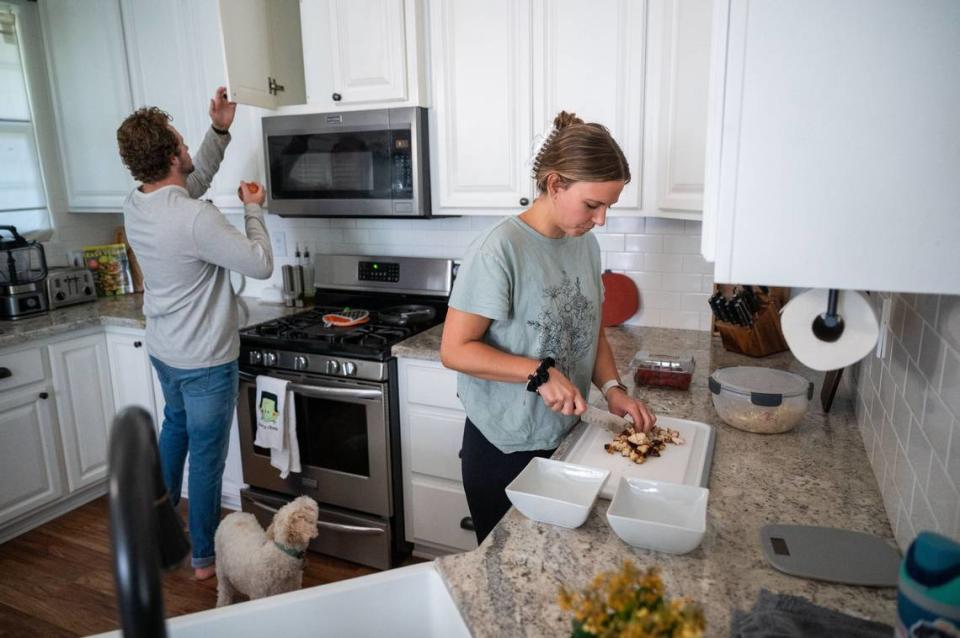
The freeway that serves as the primary connection between Lincoln and the commercial centers of Roseville and Rocklin is also one of the Sacramento region’s most congested. Even in the middle of a weekday, traffic regularly backs up at a bend in the freeway well before it connects with Interstate 80.
Voters in Lincoln, Rocklin and Roseville will likely be asked next year to approve an increased sales tax to fund improvements to Highway 65. Schmidt said Lincoln residents, especially the city’s large population of retirees, may be wary of paying extra money to fix a freeway that “will just get jammed again” as the city continues to grow.
Joiner argues the future growth in housing — essentially mandated by the state to meet SACOG’s housing needs assessment — means Highway 65 must be improved.
“If you’ve driven it, you can be convinced (to vote yes on a tax measure),” he said. “This is a local problem that we’re going to have to solve for ourselves.”
And the community will need to figure that out fast. Because there is no sign that Lincoln’s boom is going to slow down anytime soon.

